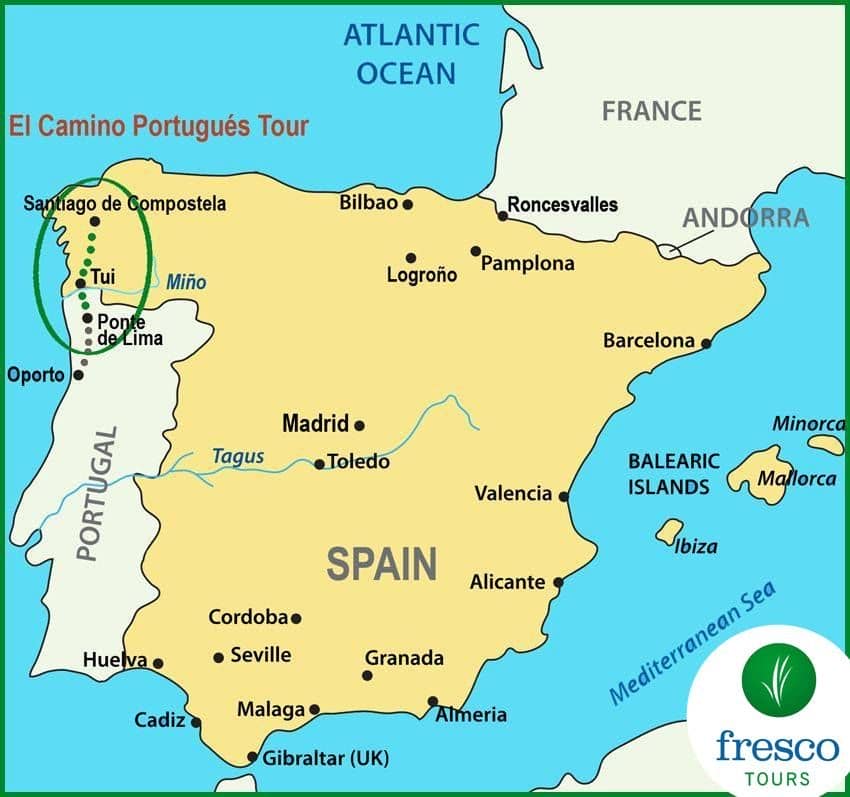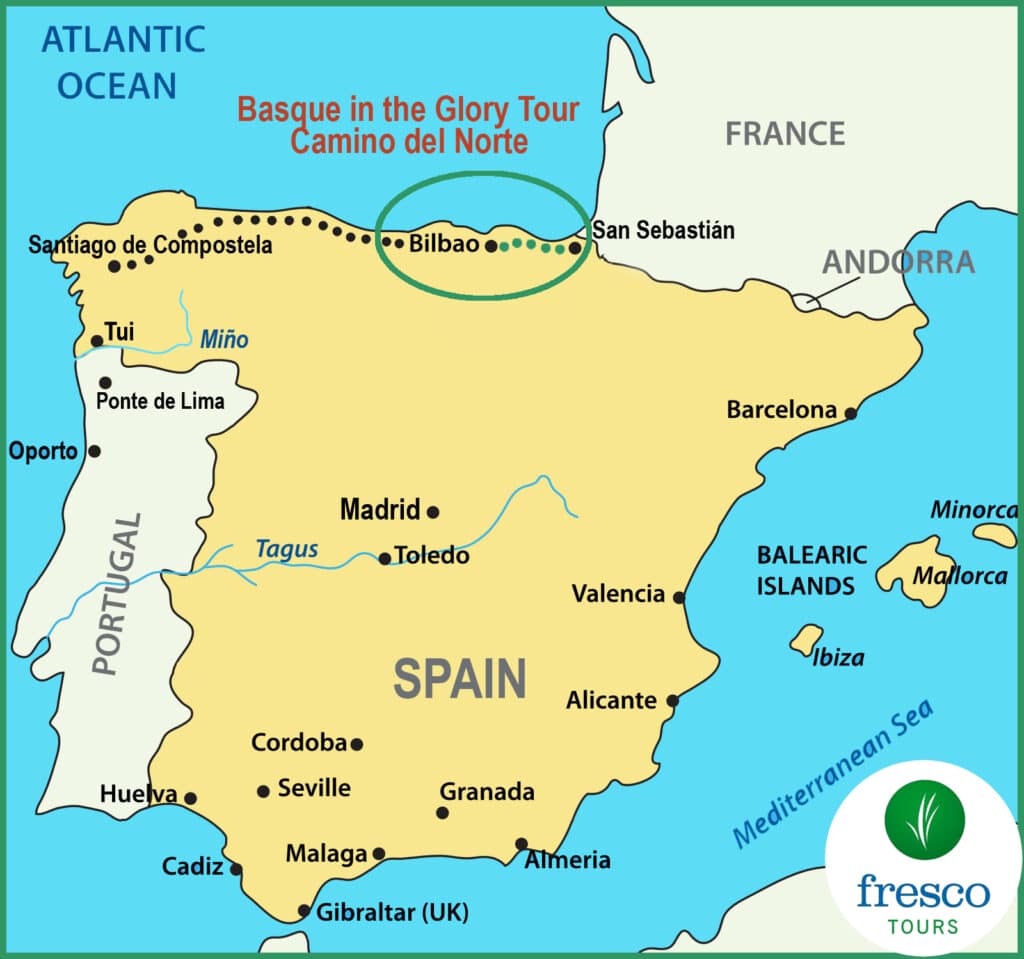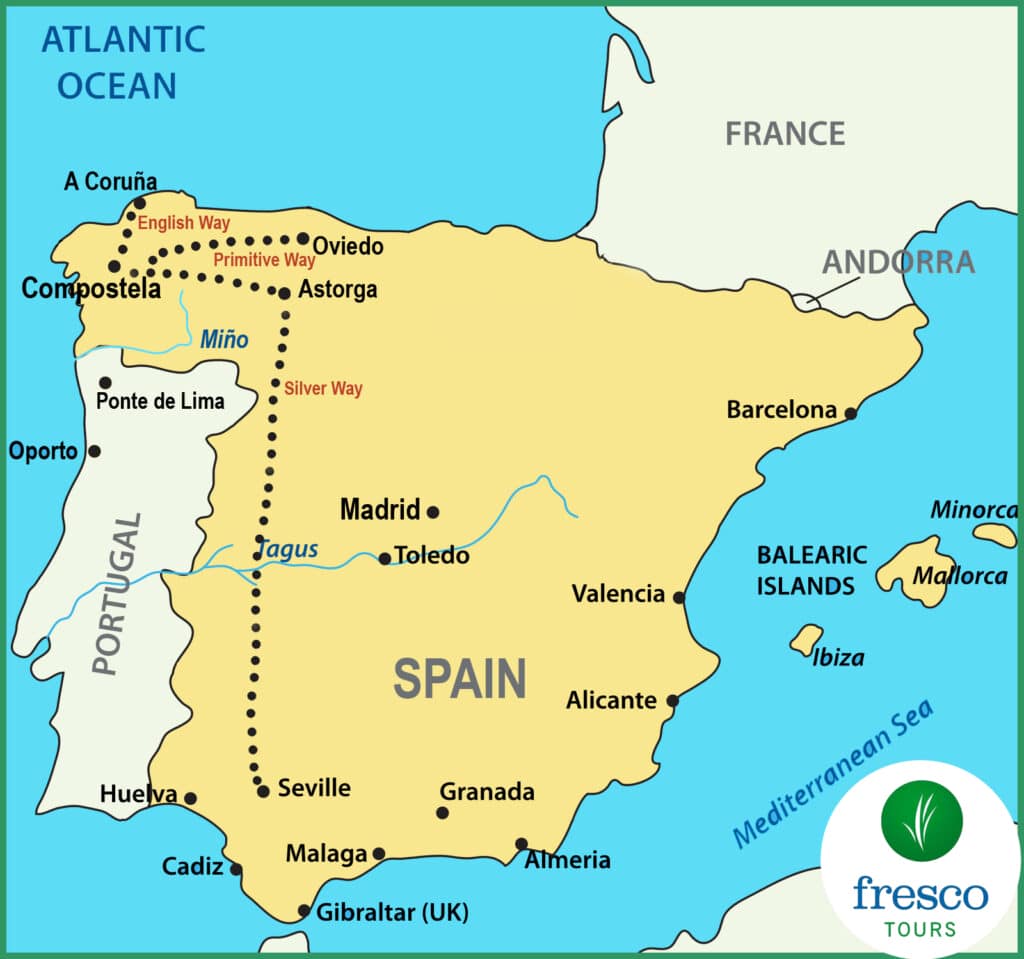Although everyone’s Camino begins at their doorstep, the majority of pilgrims no longer emulate their medieval counterparts and start to walk on one of the six major Camino routes described below.
(There are other Caminos that criss-cross Spain before joining one of the major Caminos.)

- The Camino Francés (French Way)
This is the one most pilgrims do, and the one most people have in mind when they picture the Camino. The French Way was also the first one to be marked with yellow arrows when the pilgrimage made its revival in the 1970s. This is the Camino that takes you through the historic cities of León and Burgos and comes over the Pyrenees from France (hence its name). And this is the Camino Martin Sheen walked in the film The Way.
See our guided and self-guided tours for this Camino

2. The Camino Portugués (Portuguese Way)
This is the second most popular route, accounting for 30% of all the pilgrims that arrive to Santiago de Compostela. As its name indicates, the Camino Portugués begins in Portugal and then crosses the border into Spain, always walking north. Highlights include the medieval towns of Tui and Pontevedra as well as the village of Padrón, where Saint James lived and preached in Spain.
See our guided and self-guided tours for this Camino

3. The Camino del Norte (Northern Way)
This was the first route for pilgrims crossing Spain from France, as in 813 (year Saint James’s tomb was discovered) most of the classic French Camino would have still been in Muslim hands. Pilgrims traveling to Compostela from the rest of Europe would have felt much safer up on the coast and in Christian kingdoms. The Northen Way joins the French Way in Arzúa.
See our guided tour for this Camino

4. The Camino Primitivo (Primitive Way)
This was the first route used by pilgrims to Compostela. Indeed, Alfonso II, King of León in 813, is credited with having used it when he traveled to the newly discovered tomb. The route starts in the city of Oviedo and then continue westwards into Galicia, joining the French Way in Melide.
5. The Camino Inglés (English Way)
This was the way most pilgrims on the British Isles used until recent times. Pilgrims would sail to the towns of A Coruña or Ferrol and then walk south from there to Compostela. Starting in A Coruña requires walking a supplementary stage before starting as the town is less than 100 kilometres from Compostela.
6. Vía de la Plata (Silver Way)
This Camino runs north, across Spain, from Andalucia in the south of Spain, supposedly following the old Roman road that linked their ports in the Mediterranean and their Silver mines in Galicia. The Silver Way joins the French Way in Astorga.






